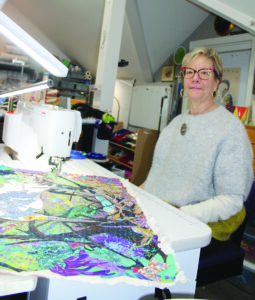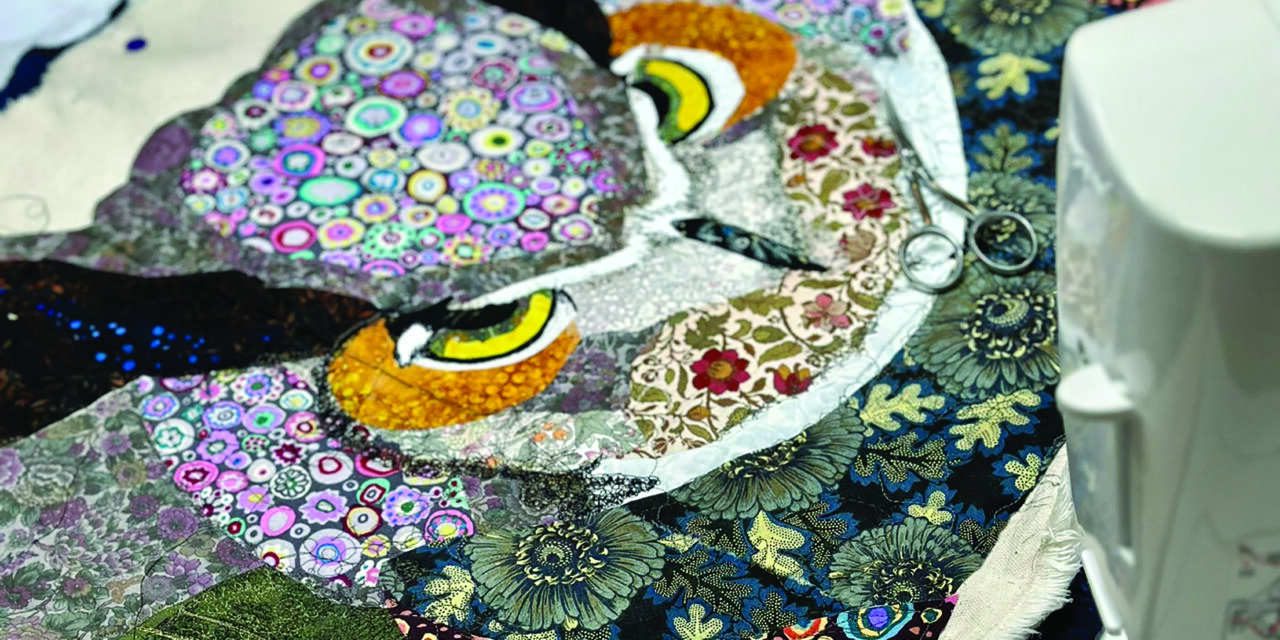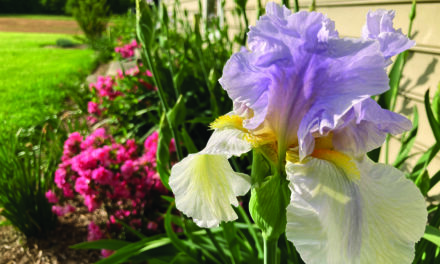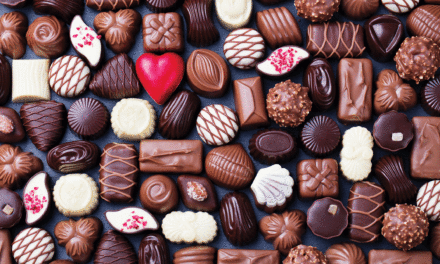
Susan Fay Schauer developed her thread painting method after a dream planted the idea in her. (Photo by Sean Clougherty)
When Susan Fay Schauer says she dreamt up her art form, she’s not kidding or using a figure of speech.
With years of success as a portrait artist, and a diverse career ahead of that involving neuroscience, wood turning and owning a yacht rental company, the pandemic brought her a new existential perspective.
Creeping in when everything was locked down was the thought that if she were gone, “the next artist will just take my place” and her work, while good, would just fade into the sea of all the other portrait artists.
“I realized it was nothing new,” she said of what she was doing, and promised herself the next artistic endeavor would be completely unique.
She set out with no expectations or rules in the quest, either.
With no rules, there are no mistakes, giving her plenty of space to create and try anything that seemed new.
“I’m generally not afraid. I screw up all the time,” she says with a nonchalant shrug. “I’m OK with it.”
Within that freedom from failure, Schauer created thread painting.
The germ of what would become that unique endeavor came to her in a dream, she recalls.
In the dream, Schauer was working on a piece using crayons for color, but instead of actual crayons, the box was filled with rolled-up pieces of fabric.
“I just instantly knew what that meant,” she says, sitting in her purposely cluttered but still inspiring her home studio. “I literally dreamt this up.”
With that vision, she went to work, turning the dream into tangible art.
She starts with a sketch, which identifies the piece’s light and dark areas. So far she’s remained loyal to wildlife as her subject.
“I think it’s just the thing I like the most,” she says.
From the sketch, she goes to her collection of English fabric to establish a range of values for the piece. She’s found it’s crucial to set boundaries in choosing fabrics, sticking to five to seven values.
“Otherwise, you’ll just keep rethinking and rethinking,” Schauer says.
The fabric gets tacked in tiny scraps and shards to transform the piece from sketch to realistic animal, but it’s the thread, she says, that produces the color.
“It’s freehand sewing,” she says. “Work that has a realistic component that kind of combines abstract and realism.”
That combination — abstract pieces forming a realistic picture — is what Schauer calls “freealism,” a term she created through the process.
Using only the basic straight stitch on her sewing machine, Schauer layers stitches of Italian thread over the fabric in different colors to reach a richness and depth in the color combinations. Instead of grabbing the black thread, she may layer a crimson, indigo blue and some black for a truer color for the piece, just as she would with paint or colored pencil.
“There’s always a richness to using multiple colors. I think that and the fabric give it its depth,” she says. “The fabric is just the base to give me some type of abstraction. From then on, I put the realism back in with the thread.”
Just like portraiture, though, getting the details right is crucial for the pieces realism, especially the eyes, for which Schauer admits an affinity.
Schauer’s first thread painting was of a fresh water bass she saw during a camping trip. Since then, she’s turned out about 30 completed pieces of a wide range of animals in the Chesapeake Bay Region, and many endangered species. All are available to view on her website, sfsfiber.art.
In her studio, she may have three or four pieces in progress at once, switching from one to another if any frustration creeps in.
“This kind of stuff can really mess with your brain, so I just put it away sometimes,” She says with a smile.
In just the few years since that fateful dream, she’s shown her work in several places and exhibitions. In May 2022 she entered the Oxford Fine Arts Fair and exhibited at the Waterfowl Festival later that year. She’s won awards at the Academy Art Museum’s Member Show and the Maryland Federation of Art’s Winter Show. In October 2023, she opened a gallery in Easton to display the work.
As far as keeping her promise of a wholly unique art form, so far she says she’s searched and only seen artists in Poland and South America doing something similar.
“Of all the art I’ve ever done this is the most playful,” she says.






